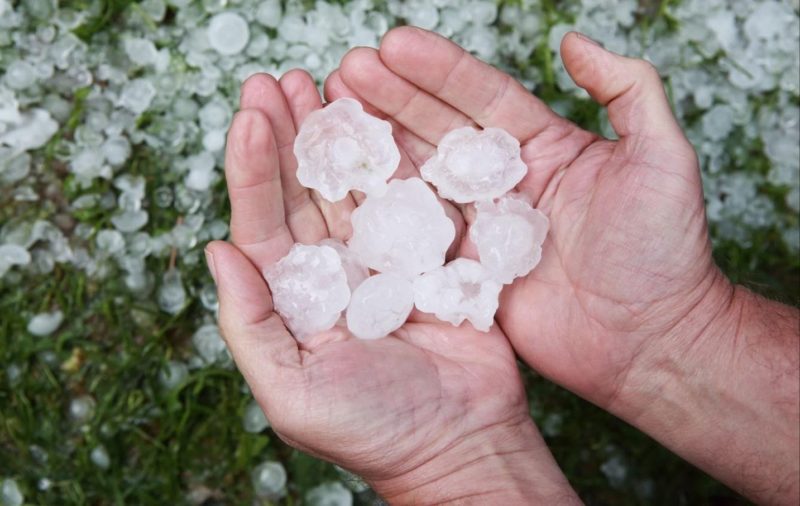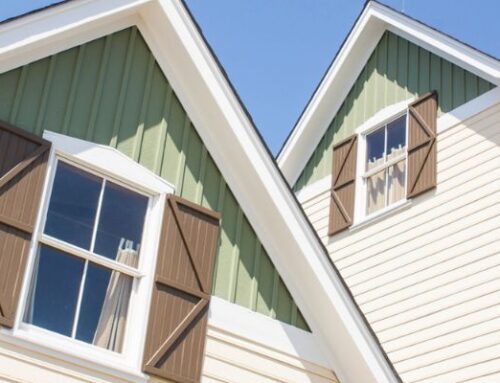Being a homeowner comes with a unique set of responsibilities and challenges. For instance, you’ve got a roof over your head, and it keeps you safe from storms. When the roof is damaged, however, by harsh weather, such as a hailstorm, what may start out as a small issue can easily turn into a big problem!
Hail can strike your home at any time and cause a great deal of damage. You need to recognize signs of hail damage to keep your home in optimal shape and to avoid any further loss. If you find that your roof has hail damage, be sure to contact Born Carpentry for all roofing repairs.
What Does Hail Damage Do To A Roof?
The severity of the damage caused to the roof by a hailstorm depends on several factors. These factors include:
• The type of roofing materials
• Age of roofing materials
• Roof slope
• Quality of construction
• Size of the hailstone
• Hail density
• Hail shape
• Velocity
• Angle of its fall
Hail damage can affect not only the very first layer of the roof but can also cause severe damage to the underlying layers. Generally, the second layer shingles are more susceptible to damage than first layer shingles because the surface directly underlying the shingle is less supportive than the first layer.
Different Types Of Hail Damage:

Hail roof damage can take two different forms. It can either be functional or cosmetic in nature.
1. Functional Hail Damage: Functional damages have an impact on the integrity and longevity of the roof.
2. Cosmetic Hail Damage: These types of damages affect the design aspect of the roof and not its structural integrity. Cosmetic damages do not affect the viability of the roof to perform its function.
A qualified, trained roof inspector will know the difference and can assist the homeowner to make sure the insurance designation is properly assigned based on the severity of the damage caused to the roof.
Hail Damage Caused To Roof Vents And Shingles:
#1 Bruises Caused By The Hail Storm:
Hailstones can dislodge the protective granules of asphalt shingles when they hit hard on the roof surface. You need to look for dark spots with no discernable patterns. Basically, the hail-inflicted abrasion usually feels soft to touch. Sometimes, the deep bruises caused by the hailstones also reveal the underlying mat, which might appear shiny. These damages indicate that you need to get your roof repaired immediately.
#2 Shingle Blisters:
Shingle blisters are trapped moisture during the manufacturing process, and they can pop due to hail impact. Blistered shingles provide less protection against intense UV rays due to granule loss. When left unchecked, they become brittle, making them a structural liability. Blisters can be hard to spot from the ground, but the trained eye can distinguish them upon closer inspection.
#3 Severe Fractures Caused To The Roof:
High-velocity hailstones can crack asphalt shingles and split cedar shakes. Any break in your roof creates a point of entry for water, which will eventually lead to leakage. Broken materials are typically noticeable from the street if you’re using a pair of binoculars and looking from the right angle.
#4 Dents:
While minor dings might not significantly affect your home’s curb appeal, they still require prompt hail storm repair. Dented metal roofing components, such as gutters and flashing, aren’t bad themselves, but they are often a sign of underlying damage.
Don’t Delay The Restoration Process– Act Now:
Choosing to delay a roof inspection or repair could be incredibly costly with both your time and money. Staying on top of things will ensure your home remains cozy and you get peace of mind.
With large enough or sustained hail, your roof’s integrity will weaken and be very problematic for you over time. Look out for leaks from breaks or holes. These leaks will either cause interior damage to your belongings or cause water to go unseen and create mold or mildew.
Hail damage can be more tricky than what you see at face value. The professionals at Born Carpentry will help you out with their expert knowledge and determination to make sure you are satisfied.
Summary:
Hail storms can cause a bunch of damage to anything exposed outside. No residential roofing material is immune. Flat roofs, asphalt, clay, and metal can all sustain visible or invisible hail damage. Sometimes a homeowner can see some obvious damage to roofing materials on their home, but other times it’s difficult to discern damage from the ground. Don’t risk climbing your roof to check it. It’s recommended you get a professional to take a quick peek at your roof after a bad storm.






